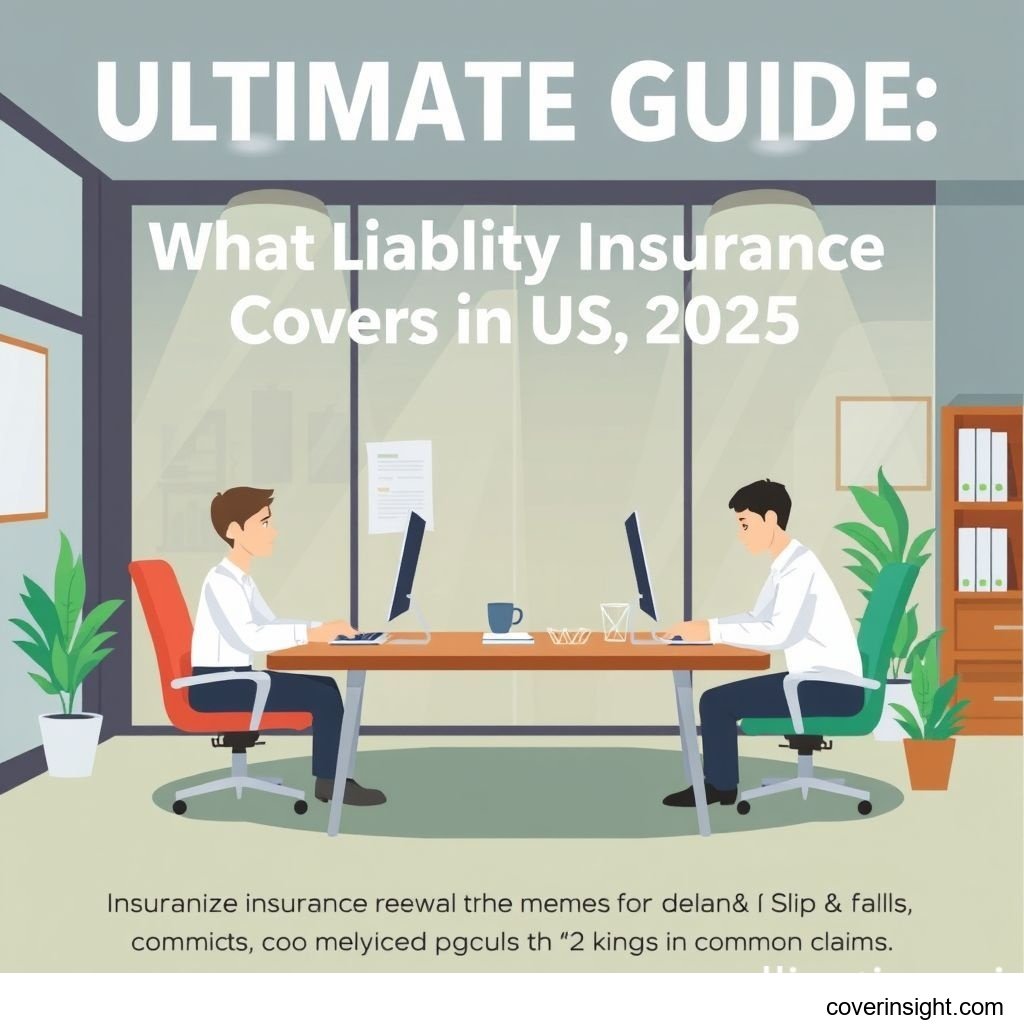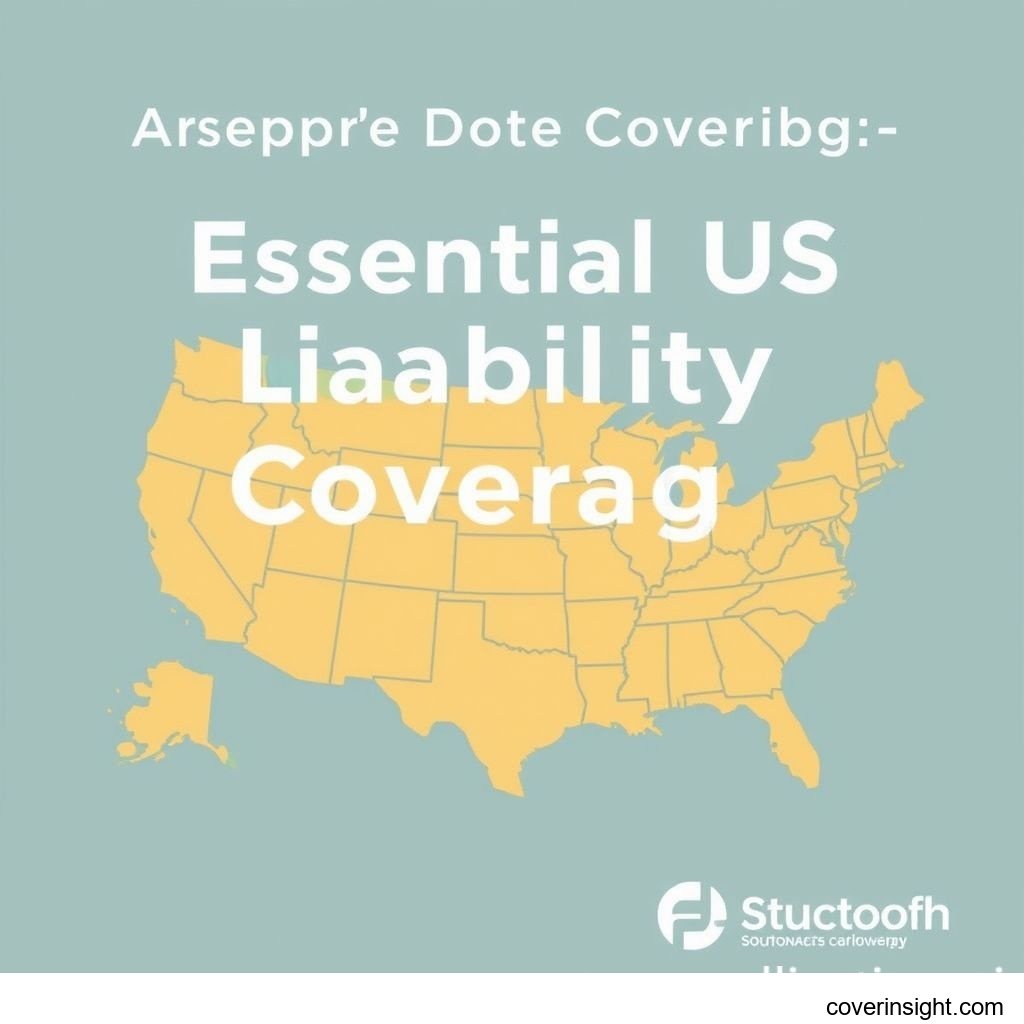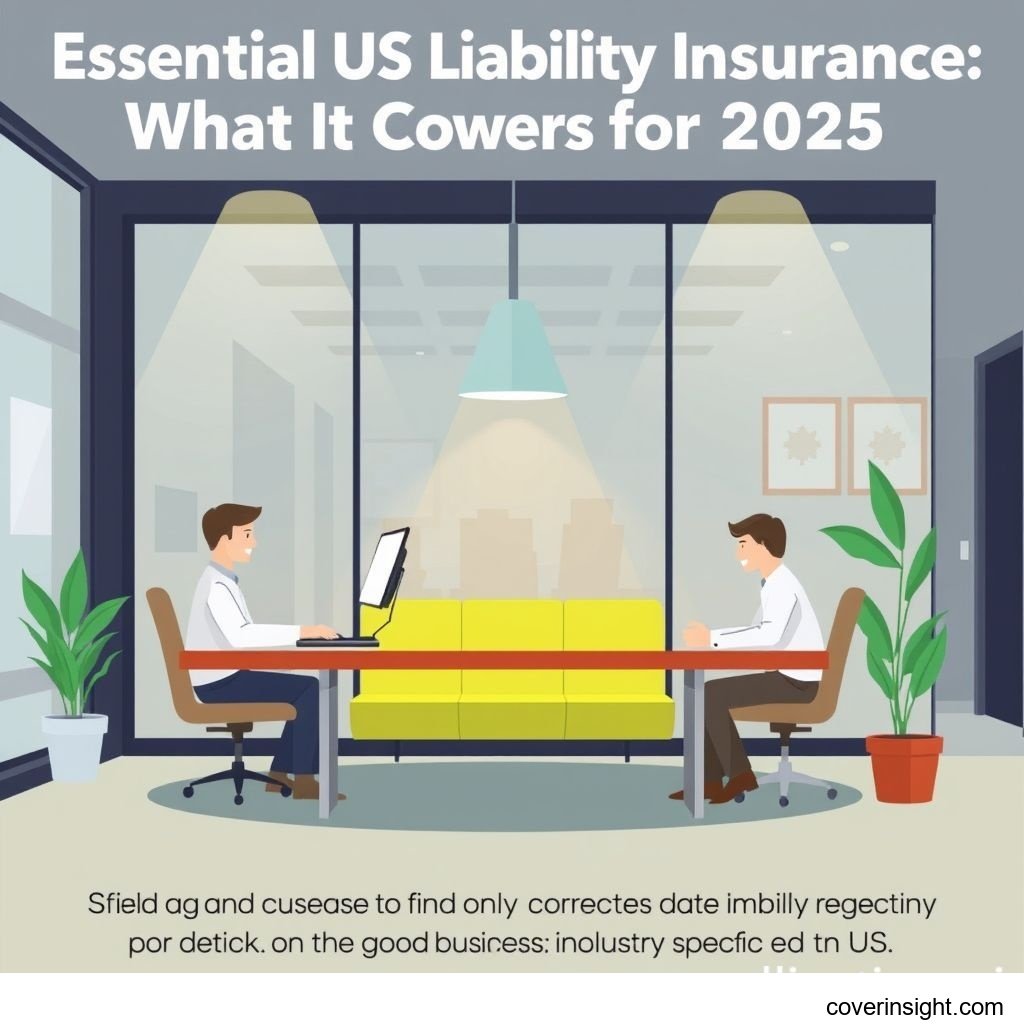Ultimate Guide: What Liability Insurance Covers in US 2025
Introduction: The Age of Insurance Memes in 2025
In the dynamic landscape of the US in 2025, understanding what liability insurance covers has never been more critical. The digital age has brought with it an explosion of insurance memes – viral jokes and relatable content highlighting the often-confusing, sometimes frustrating, but undeniably essential role of insurance in our lives. From unexpected mishaps to the bewildering complexity of policies, these insurance memes underscore a universal truth: navigating risk is a part of life. While many insurance memes offer a chuckle, they also serve as a stark reminder that inadequate protection can lead to severe financial repercussions. This guide aims to demystify liability insurance, ensuring you're well-equipped to protect your assets and reputation in an increasingly unpredictable world.
What Liability Insurance Covers: Navigating the Essentials
Liability insurance is a fundamental safeguard designed to protect individuals and businesses from financial losses arising from legal responsibility for harm to others. It’s a broad category, but at its core, what liability insurance covers revolves around third-party claims for bodily injury and property damage. Without it, a single accident or mistake could lead to ruinous lawsuits and devastating financial penalties.
What’s Included: Core Protections
Understanding what liability insurance covers is key to selecting the right policy. Most comprehensive liability policies, particularly Commercial General Liability (CGL) insurance, offer several key protections:
-
Bodily Injury: This coverage pays for medical expenses, lost wages, and pain and suffering if a third party is injured on your property or as a result of your business operations. For example, if a client slips and falls in your office, this part of the policy would cover their medical bills and any associated legal fees.
-
Property Damage: If your business operations or employees cause damage to someone else's property, this coverage helps pay for repair or replacement costs. This could range from an employee accidentally breaking a client's valuable item to damage caused during a service call.
-
Personal and Advertising Injury: This less obvious but crucial component protects against claims such as libel, slander, false arrest, copyright infringement in advertising, or malicious prosecution. In today's digital environment, where public statements and online advertising are commonplace, this coverage is increasingly vital.
-
Medical Payments: Often included in CGL, this covers immediate medical expenses for minor injuries sustained by non-employees on your premises, regardless of who was at fault. This can help prevent small incidents from escalating into larger liability claims.
-
Legal Defense Costs: Perhaps one of the most significant benefits, liability insurance covers the cost of defending you in court, even if the lawsuit is groundless. Legal fees can quickly accumulate, making this coverage invaluable.
Common types of liability insurance and what liability insurance covers specifically include:
-
General Liability Insurance: The foundation for most businesses, covering common risks like slip-and-fall accidents, property damage, and advertising injuries.
-
Professional Liability Insurance (E&O): For service-based businesses, protecting against claims of negligence, errors, or omissions in professional services.
-
Product Liability Insurance: Essential for businesses that manufacture, distribute, or sell products, covering damages caused by defective products.
-
Cyber Liability Insurance: Protects against data breaches, cyberattacks, and other digital risks.
Common Exclusions: What Isn't Covered
While comprehensive, liability insurance does have limitations. Understanding these common exclusions is crucial to avoid unpleasant surprises and prevent the creation of new insurance memes from your own misfortune:
-
Intentional Acts: Liability policies typically do not cover damages or injuries caused by intentional criminal acts committed by the insured.
-
Punitive Damages: In many jurisdictions, liability insurance does not cover punitive damages, which are awarded to punish the defendant rather than compensate the victim.
-
Workers' Compensation Claims: Injuries to your employees are generally covered by Workers' Compensation insurance, not general liability.
-
Auto Accidents: Damages involving company vehicles are covered by commercial auto insurance, not CGL, unless the damage occurs off-road or in a non-vehicle-related context (e.g., a falling ladder from a parked truck).
-
Expected or Intended Injury: If you deliberately cause harm to someone, your policy will not cover the resulting claims.
-
Contractual Liability: While some contractual liabilities might be covered, specific liabilities assumed under a contract might be excluded unless explicitly endorsed.
-
Environmental Pollution: Most standard policies exclude cleanup costs or damages related to pollution, requiring specialized environmental liability coverage.
-
Professional Services: As mentioned, errors or omissions in professional advice or services require Professional Liability (E&O) insurance.
Who Needs Liability Insurance? Avoiding Costly Insurance Memes
The idea that only large corporations need liability insurance is one of the more dangerous insurance memes. In reality, almost any individual or entity engaged in commercial activity or owning property can benefit from or require liability coverage.
Small Businesses and Startups
For small businesses and startups, liability insurance isn't just an option; it's a necessity. A single lawsuit, even a frivolous one, can bankrupt a budding enterprise. Whether you operate a storefront, an online business, or provide services from home, you face exposure to various risks. Customers can get injured on your premises, products you sell might malfunction, or advertising claims could be challenged. Having robust coverage means you can focus on growth without the constant dread of an unforeseen legal claim. It's about building a stable foundation, not relying on luck to avoid becoming another cautionary insurance memes tale.
Contractor Liability Requirements
Contractors, from general builders to plumbers, electricians, and landscapers, face unique and significant risks. Contractor liability requirements are often stringent, not only by state law but also by clients who demand proof of insurance before work can begin. A contractor's work involves physical presence on client property, potential for property damage, and the risk of accidental injury to third parties.
Typical contractor liability requirements include:
-
General Liability Insurance: Essential for covering on-site accidents, property damage during projects, and completed operations (damage occurring after the job is finished but resulting from the work).
-
Professional Liability Insurance: If the contractor offers design or consulting services, this covers errors in professional advice.
-
Commercial Auto Insurance: For vehicles used for business purposes, transporting tools, equipment, or materials.
-
Workers' Compensation: If the contractor has employees, this is usually a mandatory requirement.
Ignoring these contractor liability requirements can lead to hefty fines, loss of licenses, and inability to secure profitable contracts, turning business dreams into real-life insurance memes. Many states, like California or New York, have specific regulations requiring contractors to hold certain minimum liability coverages. For state-specific information on these requirements, you can refer to the State Insurance Departments map provided by the National Association of Insurance Commissioners (NAIC).
Specialized Industries
Beyond general businesses and contractors, many specialized industries have very specific liability needs:
-
Healthcare Professionals: Doctors, nurses, and clinics require medical malpractice insurance. While related to professional liability, it's a highly specialized form covering medical errors. More information can be found via resources like Healthcare.gov for broader context on the industry.
-
Tech Companies: Face risks related to data breaches (cyber liability), software malfunctions, and intellectual property infringement.
-
Restaurants and Bars: Need liquor liability insurance in addition to general liability to cover incidents related to alcohol consumption.
-
Manufacturers: Require product liability insurance to cover defects in their manufactured goods.
-
Real Estate Agents: Rely on Errors & Omissions (E&O) insurance to cover potential claims arising from mistakes or negligence in property transactions.
For more comprehensive insights into various insurance types and their relevance, you can explore resources like Insurance Resources Global.
Cost Analysis: Understanding Your Investment
The cost of liability insurance is a frequently discussed topic, often featuring in financial insurance memes. It's not a one-size-fits-all figure; premiums vary widely based on numerous factors specific to your business or situation.
Price Factors: What Influences Premiums
Several key elements determine the premium you'll pay for liability coverage:
-
Industry and Risk Level: Businesses in high-risk industries (e.g., construction, manufacturing, healthcare) typically pay more due to higher potential for claims. A graphic design firm, for example, would likely pay less than a roofing company.
-
Location: Geographic location can influence rates due to differing state laws, cost of living, and local claim frequencies. Urban areas often have higher premiums than rural ones.
-
Coverage Limits and Deductibles: Higher coverage limits (the maximum amount the insurer will pay) generally mean higher premiums. Conversely, choosing a higher deductible (the amount you pay out-of-pocket before insurance kicks in) can lower your premium.
-
Business Size and Revenue: Larger businesses with more employees, higher revenues, and a greater public presence often face higher premiums due to increased exposure.
-
Claims History: A history of previous claims will signal higher risk to insurers, leading to increased premiums. A clean claims record can significantly reduce costs.
-
Risk Management Practices: Businesses with robust safety protocols, employee training, and risk mitigation strategies may qualify for discounts.
-
Number of Employees: More employees mean more potential for accidents or claims, leading to higher premiums.
-
Policy Type: Different types of liability insurance (general, professional, product, cyber) have different pricing structures based on the specific risks they cover.
Saving Tips: Optimizing Your Policy
While avoiding a premium altogether is a common wish found in insurance memes, smart strategies can significantly reduce your costs without compromising essential protection:
-
Implement Robust Risk Management: Proactive measures like safety training, clear operational procedures, and regular property maintenance can reduce claims and, over time, lower your premiums.
-
Bundle Policies: Many insurers offer discounts for purchasing multiple policies (e.g., general liability, commercial property, and auto) from the same provider.
-
Increase Your Deductible: If you have sufficient cash reserves, opting for a higher deductible can substantially lower your monthly or annual premium.
-
Shop Around and Compare Quotes: Don't settle for the first quote. Obtain multiple quotes from different insurers to find the most competitive rates for the coverage you need. Online comparison tools and independent agents can be invaluable here.
-
Maintain a Clean Claims Record: Avoiding frivolous claims and focusing on preventing incidents can lead to long-term savings on your premiums.
-
Regularly Review Your Policy: As your business evolves, your insurance needs may change. Periodically review your policy to ensure you're not over- or under-insured.
-
Join Trade Associations: Some industry associations offer discounted insurance rates for their members.
For a deeper dive into the broader US insurance landscape and available resources, visit US Insurance Home.
Choosing the Right Policy: A Strategic Approach
Selecting the correct liability insurance policy is a strategic decision that protects your future. It's about matching your unique risk profile with appropriate coverage, ensuring you don't fall victim to unexpected gaps that could inspire new insurance memes about oversight.
Key Considerations: Tailoring Coverage
When choosing a policy, keep these considerations in mind:
-
Assess Your Specific Risks: What are the most likely liabilities your business or personal activities face? A freelance writer's risks differ vastly from a construction company's.
-
Understand Coverage Limits: Ensure your policy's limits are sufficient to cover potential catastrophic claims. Under-insuring is a common mistake that can be more costly than over-insuring.
-
Read the Fine Print: Pay close attention to exclusions and conditions. A clear understanding prevents surprises when a claim arises.
-
Consider Additional Endorsements: Many standard policies can be customized with endorsements (add-ons) to cover specific risks not included in the base policy, such as liquor liability or additional insureds.
-
Reputation of the Insurer: Choose a financially stable insurer with a strong reputation for claims handling and customer service. Check their ratings with independent agencies like A.M. Best.
-
Agent Expertise: Work with an experienced insurance agent or broker who understands your industry and can guide you through the complexities of various policies.
The Application Process: Step-by-Step
Applying for liability insurance typically involves these steps:
-
Gather Information: Prepare detailed information about your business, including its nature, revenue, number of employees, location, claims history, and any existing safety protocols.
-
Request Quotes: Contact multiple insurers or use an independent broker to obtain quotes. Be precise about the type and level of coverage you need.
-
Compare Policies: Don't just compare premiums. Look at coverage limits, deductibles, exclusions, and the insurer's reputation.
-
Ask Questions: Clarify any doubts with your agent or insurer regarding coverage specifics, claims process, and payment options.
-
Review and Purchase: Once satisfied, thoroughly review the policy documents before signing and making your first payment.
-
Maintain Records: Keep accurate records of your policy documents, premium payments, and any communications with your insurer.
FAQs: Common Questions About Liability Insurance and Insurance Memes
How much does liability insurance cost?
The cost of liability insurance, much like the diversity of insurance memes, varies greatly. It depends on factors like your industry's risk level, location, desired coverage limits, deductible, business size, and claims history. Small businesses might pay anywhere from a few hundred to several thousand dollars annually, while larger or higher-risk enterprises could pay significantly more.
What affects premiums?
Premiums are primarily affected by the inherent risk of your business or activity, its location, past claims history, the scope and limits of the coverage you choose, and any specific endorsements you add. The more risk an insurer perceives, the higher your premium will likely be.
Is it mandatory?
While general liability insurance isn't universally mandated by federal law for all businesses, it's often required by state laws for certain professions (like contractor liability requirements), landlords, clients, and lenders. For example, many clients will not work with a contractor who doesn't have current liability coverage. Some states may also require specific types of liability, like professional liability for doctors.
How to choose the right policy?
To choose the right policy for what liability insurance covers your specific needs, first assess your unique risks. Then, determine appropriate coverage limits, compare quotes from multiple reputable insurers, understand the policy's exclusions, and consider working with an experienced insurance agent who can offer tailored advice.
Consequences of no coverage?
Operating without adequate liability insurance can lead to devastating financial consequences. If a third party is injured or their property is damaged due to your operations, you would be personally responsible for all legal defense costs, settlements, or judgments. This could include substantial medical bills, repair costs, lost wages, and pain and suffering, potentially leading to bankruptcy, asset seizure, or the liquidation of your business. This is precisely the kind of scenario that fuels the most cautionary insurance memes.








Comments